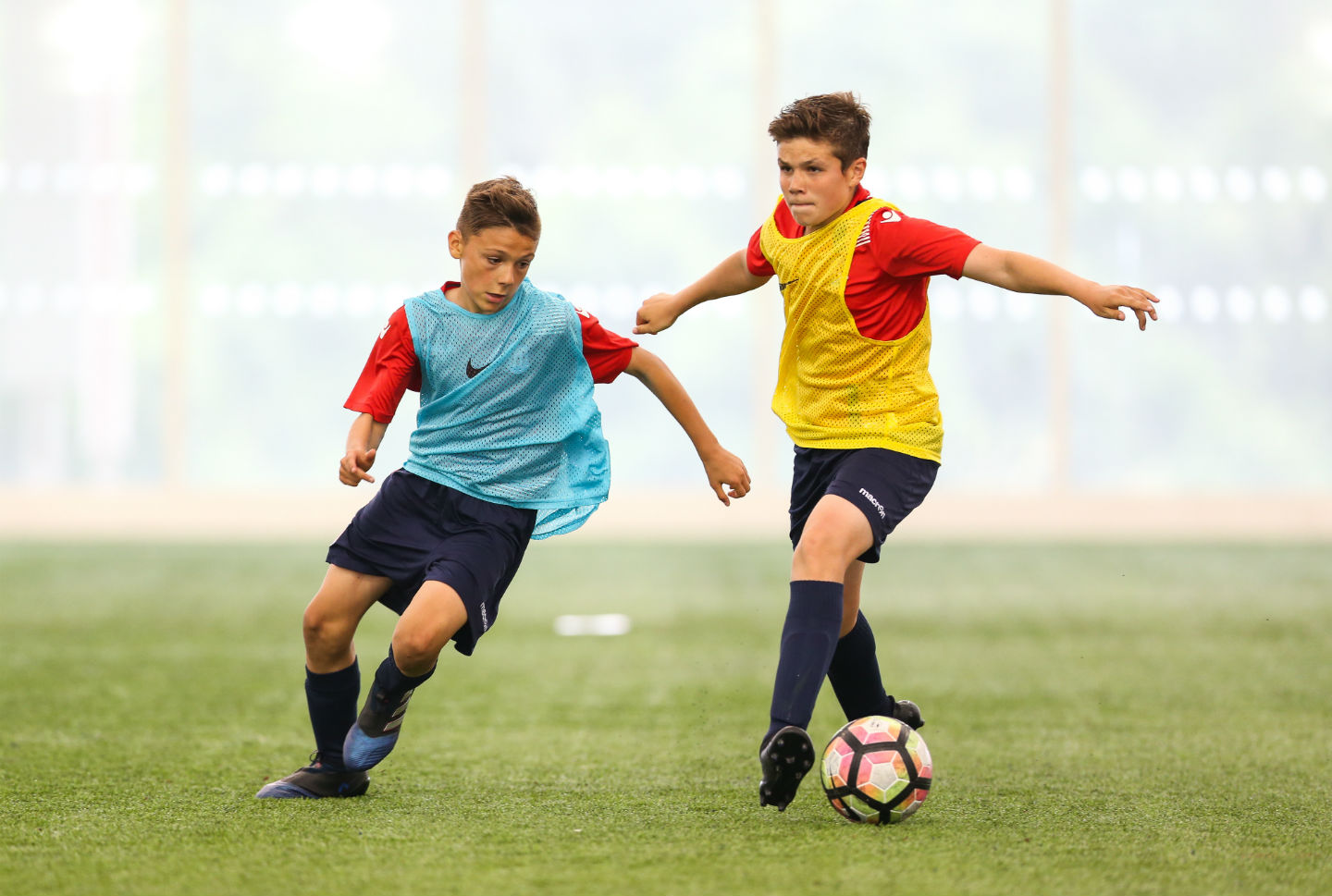Effective practice design

How to design transition practices for grassroots players
- Jack Walton
- 30 September 2016
The FA's Jack Walton looks at what transition means in the grassroots game.
Player: “What do we do when we win it?”
Coach: “Just give it back to the other team.”
This is a brief conversation between player(s) and coach that I'm aware happens on training grounds up and down the country every week of the season. A condition designed by the coach to give maximum repetition of a particular focus on being in or out of possession.
But while this may all be well-intentioned, over the course of this article I am going to make the case for why, as coaches, we should aim to move away from this situation on the training field.
Firstly though, I can't claim to be above this as I've been on both ends of the dialogue.
As a player, I remember that sinking feeling knowing that, because I didn't fit with what suited the coach's plans for that particular evening, I was likely to be busting a gut to win the ball back off the other team. And when we eventually got it, exhausted, we would just have to give it back.
It's a bit like when our loyal canine friends put in all that effort to retrieve the tennis ball only to fetch it straight back to their owner without enjoying it first. Maybe that’s where the term ‘doggies’ in football came from?
On the flip side, in my early coaching days, I struggled to grasp why the players couldn't just put a shift in for me so that I could get what I wanted and needed out of the session. Didn’t they realise I had an assessment looming that I had to pass?
Do you plan your practices, sessions and programmes to give you opportunities to coach or to give the players opportunities to learn?
The term 'transition', a noun, is defined as being 'the process or period of changing from one state or condition to another'. In football speak: in possession to out of possession and vice versa.
But, just how important is transition in the game of football?
According to Chris Anderson and David Sally, it's crucial. In their book, ‘The Numbers Game’, they suggest that ‘football is not about having the ball so much as it is about managing what seems like a succession of inevitable turnovers.'
In the Premier League, each team on average enjoys around 190 possessions per game, which means 380 moments of transition.
When we factor in the average amount of time the ball is in play – 55 minutes (soccermetrics.net) – then we can see that transition is happening every 8.7 seconds of open play. I wish I’d understood this when I first started coaching.
Do you plan your practices to give you opportunities to coach or for the players to learn?
This eye-opening statistic got me curious. If teams playing in the Premier League, home to some of the most talented players in world football, were turning the ball over every nine seconds, what is happening in my world of grassroots football?
In a completely un-scientific study, I sat and observed the team I coach (they were U12 at the time) with a tally clicker and said nothing. It was a hot summer’s day and we played 25 minutes each way. There were 258 moments of transition.
This would seem that, with an average possession time of 12 seconds, the teams in the South Liverpool & District Junior League on Wavertree Botanical Park were better at keeping the ball than the teams occupying either side of Stanley Park.
A conservative assumption would put the ball in play at 50%, which would see a moment of transition occur every six seconds.
I don’t think I have to make much of a case to include something in practice that occurs ten times per minute in competition. The 'why' would seem quite conclusive.
The next question may be – how?
Direction helps. Goals, end zones and target players can all be effective ways of giving a realistic opportunity to transition in practice. But even if a practice is non-directional then simply ‘breaking out’ is better than ‘give them the ball back’.
The irony of the latter is that when this is put into practice on match day, it is often the moment that raises the blood pressure most on the sidelines.
The importance of practice, as championed by coach developer Mark Upton from the work of Russian neuro-physiologist, Nikolai Bernstein, is to provide ‘repetition without repetition’.
The game is so random and fluid by nature that the same situation never occurs twice. Including elements of transition should help your practices to achieve this.
What’s your view on transition in practice and how do you include it? Do you have your own coaching fundamentals? How often does the ball turn over in the matches that your players compete in?























